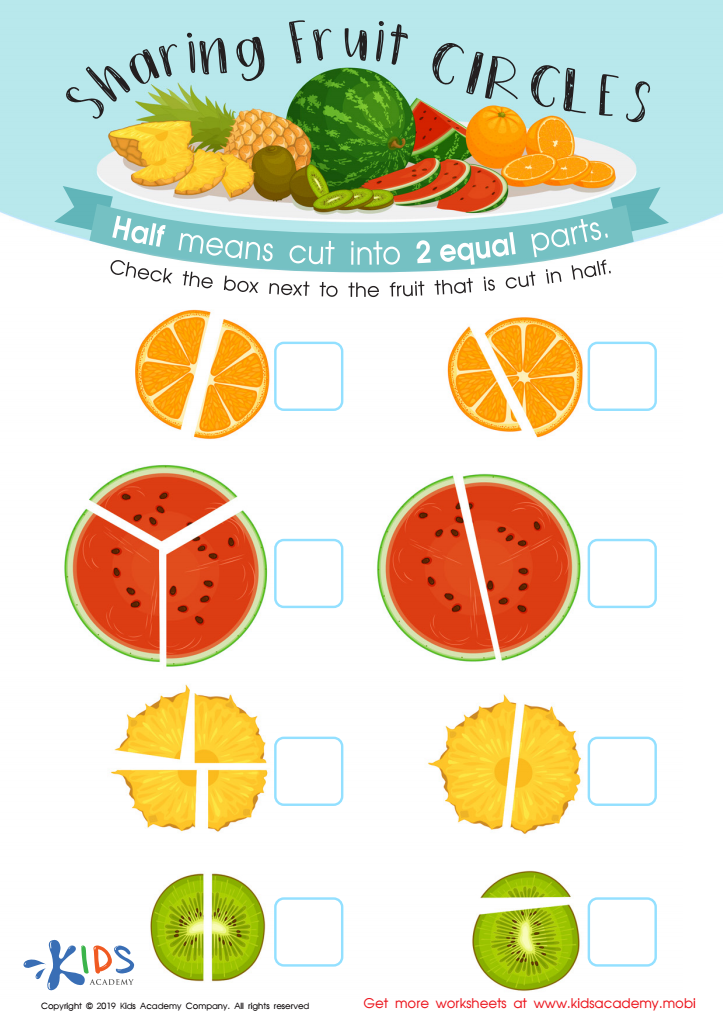Fractions introduction Worksheets for Kids
1 filtered results
-
From - To


Sharing Fruit Circles Worksheet
Question/Answer
Why is the Fractions introduction skill important for Grade 2 students?
The Fractions introduction skill is important for Grade 2 students because it lays the foundation for understanding part-whole relationships, essential for math concepts like division, ratios, and percentages later on. Early exposure helps students develop critical thinking and problem-solving skills, making future mathematical learning more accessible and less intimidating.
What are some effective activities to train students’ Fractions introduction skill when teaching them about Geometry?
Effective activities for introducing students to fractions in geometry include using visual aids like fraction circles or bars, incorporating hands-on activities like folding paper to create and compare fractions, utilizing real-life examples such as dividing shapes into parts, and interactive games that involve matching or identifying fractions.
How does the mastery of the Fractions introduction skill affect a student's performance at an early age?
Mastering the introduction to fractions at an early age significantly enhances a student's mathematical foundation. It improves number sense, aids in understanding proportional reasoning, and facilitates the transition to more complex mathematical concepts, such as algebra.
 Assign to the classroom
Assign to the classroom











